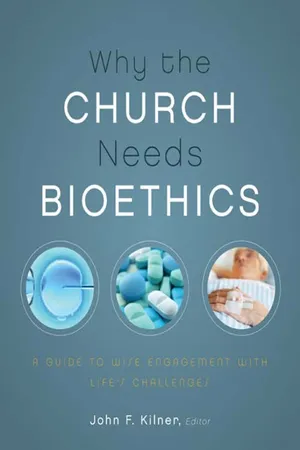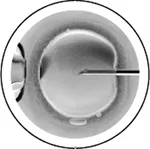Richard E. Averbeck
The situation of Betty and Tom, on which this chapter is based, is reminiscent of millions of similar situations today and throughout human history. It is part of our human groaning: “We know that the whole creation has been groaning as in the pains of childbirth right up to the present time. Not only so, but we ourselves, who have the firstfruits of the Spirit, groan inwardly as we wait eagerly for our adoption as sons, the redemption of our bodies” (Rom. 8:22–23).1
For a woman, the anguish of not being able to have a child can far exceed “the pains of childbirth.” We live as fallen people in the midst of a fallen world, all of which are in “bondage to decay” (v. 21). For some couples, this particular kind of groaning becomes an all-consuming part of their lives, at least for a time, if not permanently. It spoils everything, so to speak. Once they encounter this obstacle, no part of their marriage relationship or any family or other social relationship escapes its dark shadow. They will do almost anything to overcome it, no matter what tactics may be involved. Some handle it better than others, but the pain involved in not being able to have a baby is very real and can be overwhelming.
After long-term disappointing failure at trying to have a child naturally, Betty and Tom try in vitro fertilization (IVF) with Betty’s eggs, but without success. As a result, they now intend to use eggs provided by Betty’s sister, Laura, or perhaps even have her serve as a surrogate mother for them by being artificially inseminated with Tom’s sperm. Meanwhile, a considerable amount of marital and social distance and conflict have arisen between them and with others. So they are trying to manage the complications of both the infertility itself and the ways they have been handling it. It is not a happy situation and, realistically, there is a great deal of potential for serious ongoing problems even if they should manage to find a way to have a baby “in the new-fashioned way.” As noted above, this is not a new story. Each instance of it, however, has different people involved and, therefore, its own peculiarities.
The goal of this chapter is to look at the issues Betty and Tom face from the perspective of Old Testament Scripture. First, we will consider passages that deal directly with barrenness (i.e., infertility). According to the Bible, this was just as serious and difficult a problem in ancient Israel as it is today — perhaps even worse. Some of the ways and means available to deal with it were different, but not all of them were. Moreover, the harsh personal, marital, relational, and social repercussions were much the same as today. It is not difficult to find biblical correspondences with this case study. Second, after working through the infertility accounts, we will focus our attention on Genesis 1–4 and its implications for dealing with infertility from a biblically based bioethical point of view. Our purpose will be to discover what biblical framework of thinking and acting is available to guide Tom, Betty, and Laura through such a troubling dilemma in a way that is pleasing to God.
We cannot escape groaning in life, even if we are among the redeemed (Rom. 8:23). It comes with the condition and circumstances of being fallen people in a fallen world. Yes, God can and sometimes does step in supernaturally to change people’s situations. Praise him! As harsh and painful as it may be to face, however, God is generally more interested in changing people than he is in changing their circumstances. This is a reality that all need to grasp no matter what their circumstances may be. The Lord wants people to walk faithfully and prayerfully with him in the midst of their life situations, whatever they may be. This is the only route to “the peace of God, which transcends all understanding” (Phil. 4:7).
INFERTILITY AND BARRENNESS IN THE OLD TESTAMENT
It is a good and natural God-given desire for a man and woman, committed to one another in a loving marriage, to want to have a baby together. That God’s original and perfect design welcomes reproduction needs to be affirmed with gentle care amid the difficulties faced by a couple struggling with infertility. Psalm 127:3–5 makes the point from a man’s point of view: “Sons are a heritage from the Lord, children a reward from him. Like arrows in the hands of a warrior are sons born in one’s youth. Blessed is the man whose quiver is full of them. They will not be put to shame when they contend with their enemies in the gate.” From the woman’s point of view, Psalm 113:9 praises the Lord for his grace when “he settles the barren woman in her home as a happy mother of children.”
One of God’s covenant promises to the ancient Israelites as a nation was that if they remained faithful to their covenant with him, he would bless them with fertility (Exod. 23:26; Deut. 7:14). Fertility was a sign of God’s favor toward them as part of his plan to prosper his covenant people, who were the especially blessed nation in the midst of all the other nations. Conversely, there are instances in which infertility is portrayed as a judgment from God, whether within Israel (e.g., 2 Sam. 6:23, regarding the barrenness of David’s wife Michal) or among other peoples (e.g., Gen. 20:17–18, regarding Abimelech’s entire household).
In the case of Betty and Tom, all that has gone wrong flows ultimately from the corruption of God’s original design physically, relationally, and spiritually as seen in Genesis 3–4 and the rest of the Bible. We will come back to all this later, but it is important to note here that, on the one hand, some elements of the case are not necessarily a direct result of the people’s personal corruption. The physical reality of infertility, for example, is a medical problem that can occur beyond people’s control. On the other hand, the case study suggests that they may have contributed to the problem by waiting so long. Betty’s “clock” has been “ticking” for a long time. The previous pregnancy and abortion shows that she was fertile earlier in life. It also shows, however, that something has gone terribly wrong in their thinking about having a baby in the first place. The disregard for the life of the earlier baby and the self-centered pragmatic reasons for the abortion are not the focus of this chapter, but they are emblematic of the underlying corruption that is in full view in the case study.2
BARRENNESS AND INHERITANCE IN THE OLD TESTAMENT WORLD
There are a number of cases of barrenness in the Old Testament, beginning with Israel’s three main ancestral women: (1) Sarai, Abram’s wife (Gen. 11:30; they were later renamed Sarah and Abraham, respectively, Gen. 17:5, 15–16), (2) Rebekah, Isaac’s wife (Gen. 25:21), and (3) Rachel, Jacob’s wife (Gen. 29:31; Jacob was given a second name, Israel, in Gen. 32:28).3 In some ways, infertility was even worse in the Old Testament world than today because of the legalities associated with inheritance rights in the patricentric tribal clan culture of that day.
Consider, for example, the case of the daughters of Zelophehad (Num. 27:1–11; cf. also 26:33 and chap. 36). Their father had no male heirs, which meant that his line of descent would vanish from his tr...

